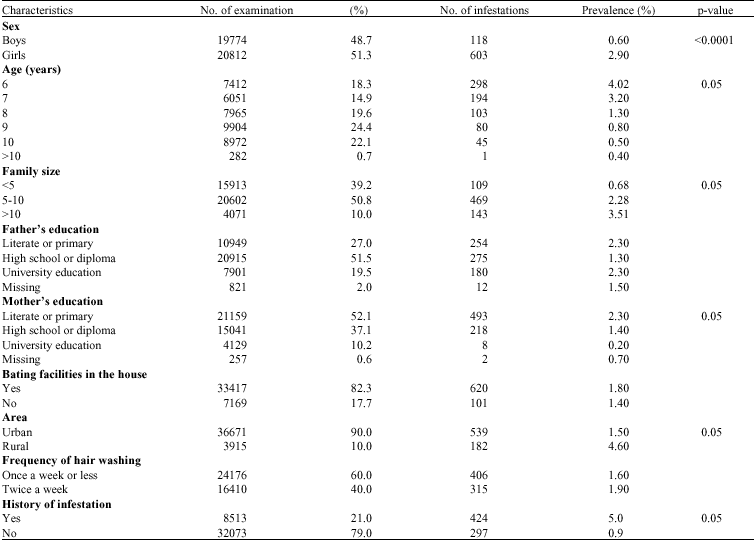Research Article
Epidemiological Aspects of Pediculosis capitis and Treatment Evaluation in Primary-School Children in Iran
Department of Vector Control,Sepahan Green-Thou Plant Pathology and Medical Entomology Center,Kerman University of Medical Sciences, Kerman, Iran
Mohammad Reza Aflatoonian
Health System Research Committee, Kerman University of Medical Sciences, Kerman, Iran
Alireza Fekri
Department of Dermatology, Kerman University of Medical Sciences, Kerman, Iran
Mahbobeh Yazdi
Department of Anesthesiology, Kerman University of Medical Sciences, Kerman, Iran









